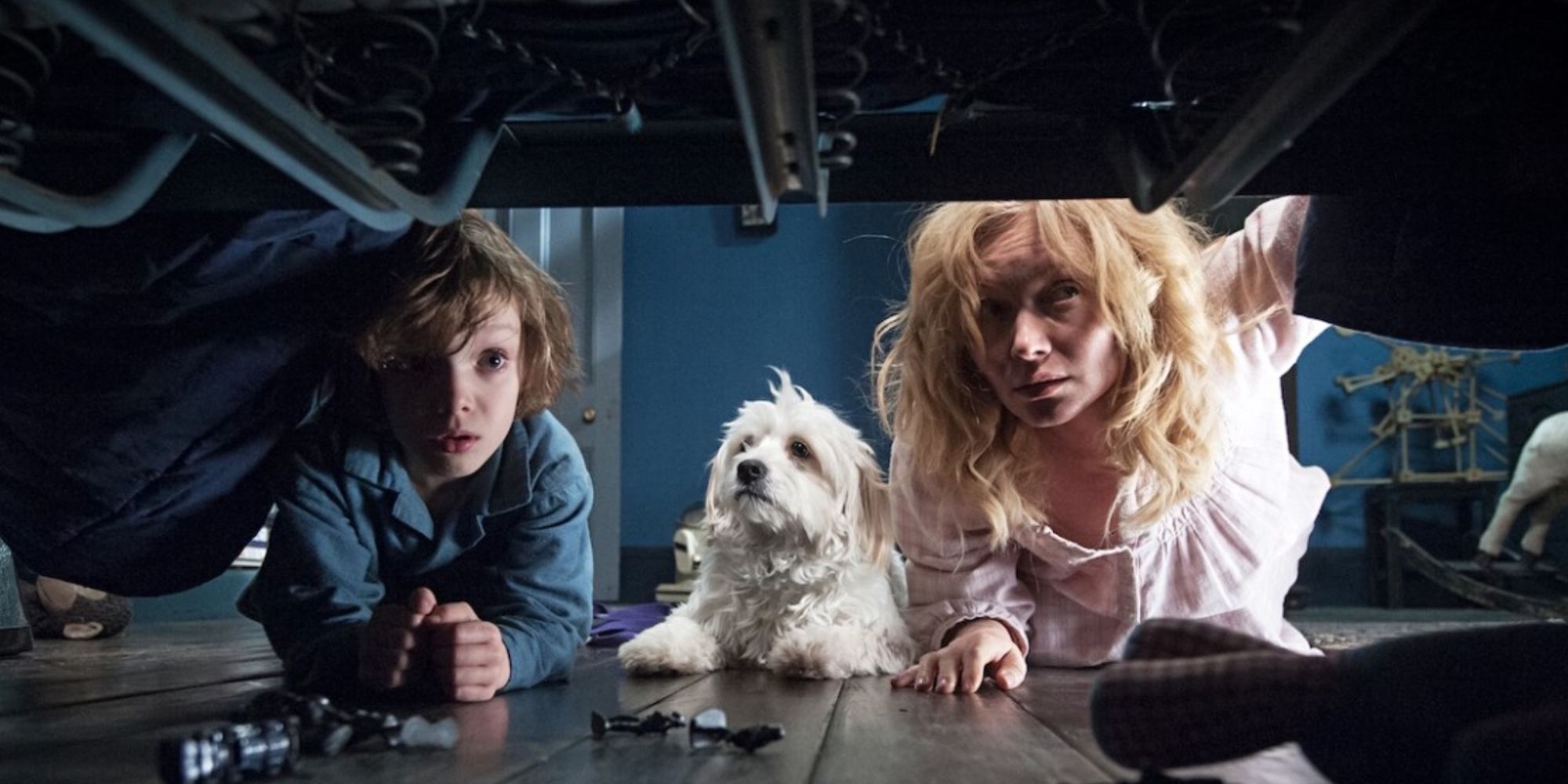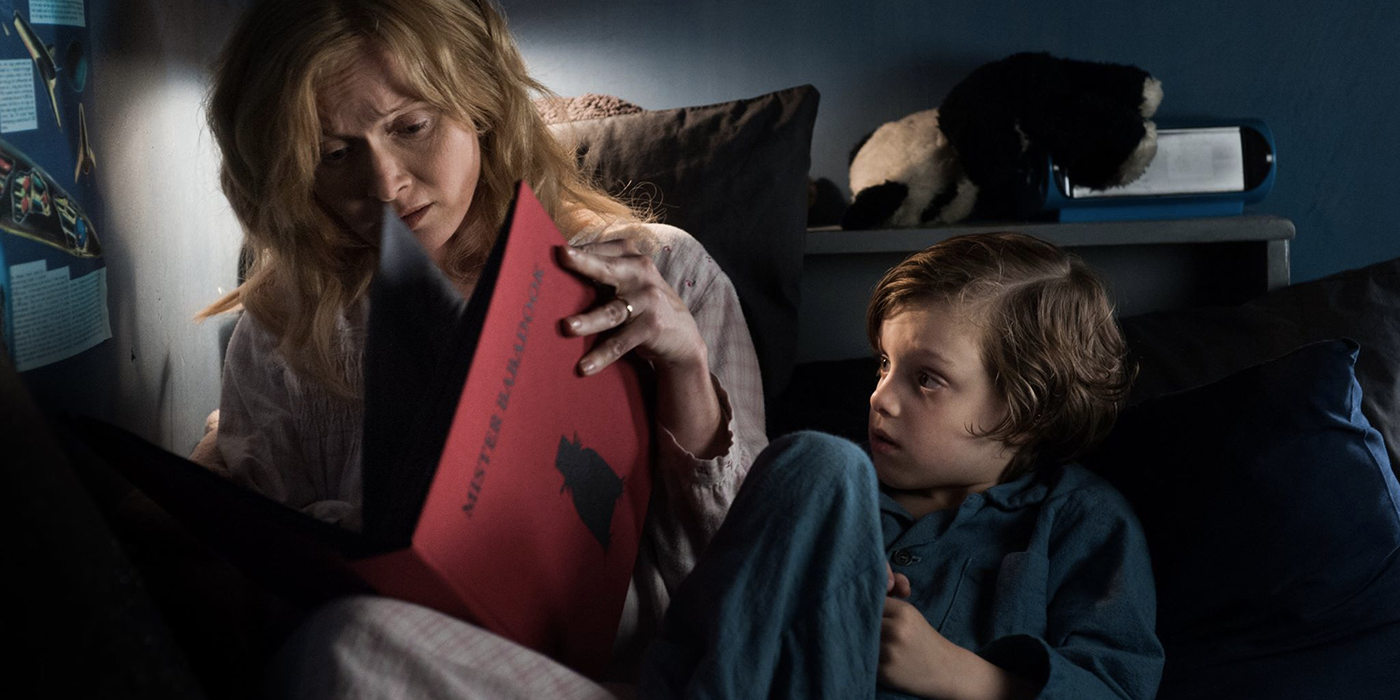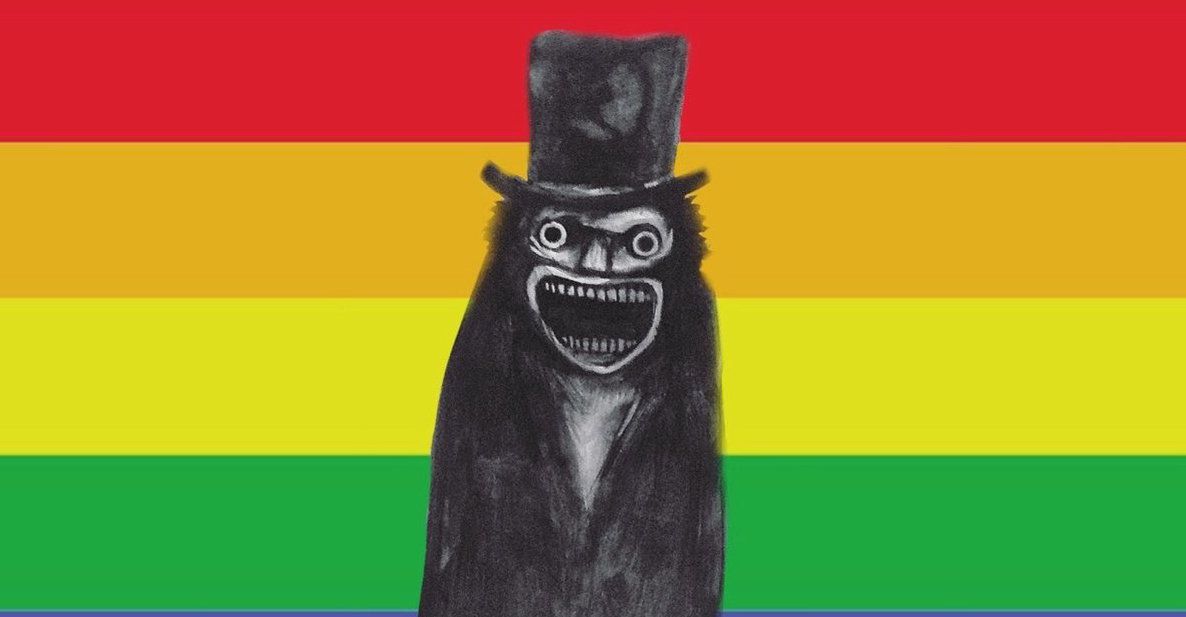While the late William Friedkin’s 1973 horror magnum opus The Exorcist is widely considered one of the scariest films of all time (and for many, many good reasons), in 2014 the legendary director himself tweeted that he’s never seen a film more terrifying than Jennifer Kent’s cinematic debut, The Babadook. These are big words coming from a director whose own horror phenomenon rivaled a little thing called the Watergate scandal in terms of the attention it received from the press (and on the day after Christmas, no less) but he wasn’t the only one waving his flag for the elevated horror gem. Even Edgar Wright, a known horror aficionado himself if the copious references in Shaun of the Dead are anything to go by, chimed in to call it “a terrific debut” that “people need to see,” preferably on the big screen. But what was it about this low-budget Australian horror flick from an at-the-time unknown director that “raised [the] blood pressure” of the genre’s masters and is it still as revered today?
Though she’s now known as the director of both 2018’s The Nightingale and the final episode of Guillermo del Toro’s Cabinet of Curiosities (itself considered among the best of its bunch), Kent’s career actually began as an actress, peaking with a small role in George Miller’s Babe: Pig in the City (and yes, that did come from the same director as Mad Max: Fury Road). After losing interest in acting, she began an apprenticeship in directing under the wildly controversial Lars von Trier after being inspired by his film Dancer in the Dark. In an interview with The Guardian, Kent revealed that she wrote an e-mail to Trier stating that she’d “rather stick pins in [her] eyes than go to film school,” an approach that seemingly resonated with Trier, who allowed her to shadow him over the duration of his time on set shooting Dogville (talk about a trial by fire). Kent described the experience as invaluable, especially with regard to the stubbornness required in order to maintain one’s artistic vision. “Women are not socialized to be stubborn and to hold on to a vision,” she said. Enter The Babadook, where her iron grip over her authorial approach remains ever present throughout.
What Is ‘The Babadook’ About?
Horror movie monsters are a dime a dozen, but there’s something particularly special about a monster that one rarely gets to see. The tension that The Babadook derives from the age-old fear of the unknown is phenomenal and illustrates how one’s horror standards can be met through atmosphere alone. The Babadook opens on the worst day of Amelia’s (Essie Davis) life: the birth of her son Samuel (Noah Wiseman in one of the most intentionally aggravating child performances of all time). A joyous occasion is ruined by a car crash in the rush to the hospital that takes the life of her husband, leading her to resent her child for his connection to the memory of her husband’s death. Things start to get spooky when upon reading him a bedtime story (their nightly tradition), Samuel chooses a book that Amelia’s never seen before: Mister Babadook.
Though a childlike pop-up book, it describes the titular monster in gruesome detail and proclaims that once readers are aware of its existence, there is no escaping its malevolent clutches. Sure enough, the torment begins in the form of insomnia, hallucinations, and overwhelming homicidal thoughts. Samuel proves more and more disturbed by the visions than Amelia because he is much quicker to accept the monster’s existence, while Amelia runs through the torturous cycle of burning out on her job while maintaining it in tandem with her increasingly anxiety-prone child. Samuel wants to face the monster head-on, but many of his methods (Goonies-esque weapons and booby traps) at first do his mother a lot more harm than good.
‘The Babadook’ Bases Its Fear on the Real-Life Horrors of Motherhood
If there was ever a film like The Babadook, it’s David Lynch’s Eraserhead, itself an abstract expression of concentrated nausea and disgust funneled through a young man’s complicated feelings about his own spawn. This was undoubtedly a source of inspiration for Kent, whose cine-literacy shines from the screen, evident in all the silent or black-and-white horror movies Amelia watches while she can’t sleep (NOTE: there are so many more effective movies to watch on sleepless nights). However, Kent tackles something still relatively taboo by focusing the film through the perspective of a struggling single mother. In the same interview above, she states, “We’re all, as women, educated and conditioned to think that motherhood is an easy thing that just happens. But it’s not always the case”.
Indeed, motherhood is often portrayed as constantly jovial and life-affirming in spite of some overwhelmingly disastrous consequences that it can pose to mental health when matched with feelings of anxiety, depression, and burnout. Raising a child is one of the most arduous efforts one can undertake on this planet, yet if America Ferrera’s speech in the recent smash hit Barbie taught us anything, it’s that women are not only expected to perform these tasks but to relish them. Showing any weakness or, God forbid, displeasure from motherly tasks sees these women quickly branded as monsters themselves in our society. Kent admitted to her own fear that, not being a mother herself, she’d quickly be vilified by men and women alike, however on the contrary, she “experienced a collective sigh of relief that women are seeing a mother up there that’s human.”
Mister Babadook Found a Life Beyond the Film as an LGBTQ+ Icon
Whether it’s a joke that spawned so many memes that it’s now preached as gospel, or whether queer elements were genuinely coded into The Babadook is hard to ascertain. However, if you’re a fan of the great French philosopher Roland Barthes, you know that authorial intent is only half of what makes a text meaningful. The other half is the reader’s and in this case, the readers have spoken. Mister Babadook even made an appearance on RuPaul’s Drag Race, but if that’s not enough to convince you, there’s more to it than the fact that he lives trapped in a closet and likes to express himself through flamboyant pop-up books. For many LGBTQ+ people who express similar feelings of depression, anxiety, and a fear of expressing themselves, living in a half-realized state and unable to show themselves for who they really are, Mister Babadook emblematizes their family struggles. Karen Tongson, an associate professor of gender studies and English at USC, put it best in an interview with the LA Times when she explains that: “for people who lived with a lot of their love and their passion in the closet, or who felt demonized in the broader culture, it’s very easy to find points of identification with monsters”.
Whether it’s about maternity, queerness, depression, or anxiety (the correct answer is actually yes, all of the above), looking at the hidden meaning behind The Babadook, it’s no wonder that Friedkin connected to it. The Exorcist itself pioneered the elevated horror genre, functioning as a metaphor for a priest’s crisis of faith in a post-counterculture era where religion lost the sway that it had in its wartime days, crafting its monster from the externalization of internal anguish. In today’s times, where society is gratefully placing more emphasis on mental health, Mister Babadook manifests itself from the suppressed grief and repressed depression fueled by both Amelia and her child, who’s disallowed from ever mentioning his father for fear of his mother’s wrath. Similar to “The Murmuring” (Kent’s episode of Cabinet of Curiosities), The Babadook is about learning to discuss and share your pain, as only then can the bedtime monsters that plague your sleep be truly vanquished.
























































![Social Media Spring Cleaning [Infographic] Social Media Spring Cleaning [Infographic]](https://imgproxy.divecdn.com/9e7sW3TubFHM00yvXe5zvvbhAVriJiGqS8xmVFLPC6s/g:ce/rs:fit:770:435/Z3M6Ly9kaXZlc2l0ZS1zdG9yYWdlL2RpdmVpbWFnZS9zb2NpYWxfc3ByaW5nX2NsZWFuaW5nMi5wbmc=.webp)
![5 Ways to Improve Your LinkedIn Marketing Efforts in 2025 [Infographic] 5 Ways to Improve Your LinkedIn Marketing Efforts in 2025 [Infographic]](https://imgproxy.divecdn.com/Hv-m77iIkXSAtB3IEwA3XAuouMwkZApIeDGDnLy5Yhs/g:ce/rs:fit:770:435/Z3M6Ly9kaXZlc2l0ZS1zdG9yYWdlL2RpdmVpbWFnZS9saW5rZWRpbl9zdHJhdGVneV9pbmZvMi5wbmc=.webp)













